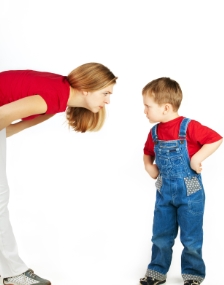 Children often do not have the ability to categorize and express their emotions. They don’t have the vocabulary to tell you how they are feeling. They might not be able to say, “I am mad” when they are mad or “I am frustrated” when they are frustrated, due to their lack of vocabulary. Instead they say, “I hate you!” “You are the worst friend!,” or “Shut up!”
Children often do not have the ability to categorize and express their emotions. They don’t have the vocabulary to tell you how they are feeling. They might not be able to say, “I am mad” when they are mad or “I am frustrated” when they are frustrated, due to their lack of vocabulary. Instead they say, “I hate you!” “You are the worst friend!,” or “Shut up!”
We need to help children tap into the vocabulary that they need in order to help them manage these difficult feelings.
In her book “The Curse of the Good Girl,” Rachel Simmons addresses key ways for children to manage their feelings of frustration and anger.
She explains that we need to teach girls (and also boys) about inside feelings and outside feelings. Even if girls are asked to express their negative feelings, they say they will limit themselves to three emotions; these are usually “angry” “annoyed” or “frustrated.” Children need to be able to talk about their more sophisticated emotions or where their anger stems from.
Anger is known as a secondary emotion, Simmons notes because we always feel it on the heels of another emotion. We usually feel embarrassed, offended, or disrespected first, then revert to prickly anger to protect our more tender feelings
When a person is upset and you observe them, you usually can physically see their outside feelings of anger, frustration and annoyance. Their face turns red, they sigh heavily and their eyes narrow.
What we don’t see is the persons inside feelings, which are usually, hurt, disappointment, embarrassment, guilt, anxiety and fear. Simmons emphasizes that sharing inside feelings can almost always diffuse conflict, and create feelings of connection.
She quotes, “As a wise 5th grader once told me, feelings are like mirrors: Give an outside feeling, get an outside feeling reflected back. Give an inside feeling, and maybe you’ll get one in return.”
Simmons goes on to list:
Outside Feelings:
- Frustration
- Anger
- Irritation
- Annoyance
- Rage
- Disgust
Outside Body Language:
- Rolling eyes
- Shifting weight
- Turning away
- Slouching
- Hand on hip
- No eye contact
Inside Feelings:
- Insecure
- Sad
- Excited
- Betrayed
- Self-conscious
- Guilty
- Used
- Hurt
- Put down
- Inferior
- Panicked
- Disappointed
- Afraid
- Confused
- Vulnerable
- Jealous
- Humiliated
- Embarrassed
- Anxious
- Ashamed
- Regretful
Teaching children to express their inside feelings can help them feel competent, and confident when faced with their difficult emotions.
It is a life skill that is invaluable.
The words of this author reflect his/her own opinions and do not necessarily represent the official position of the Orthodox Union.
